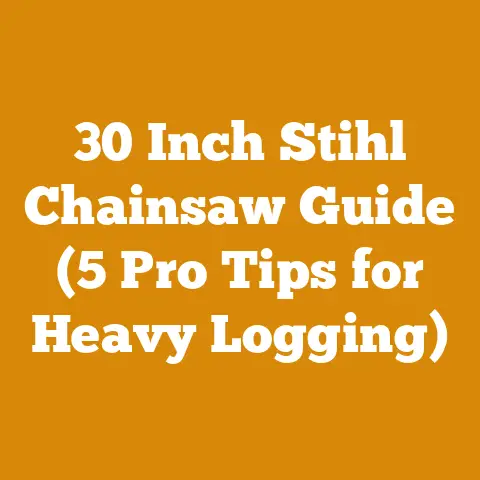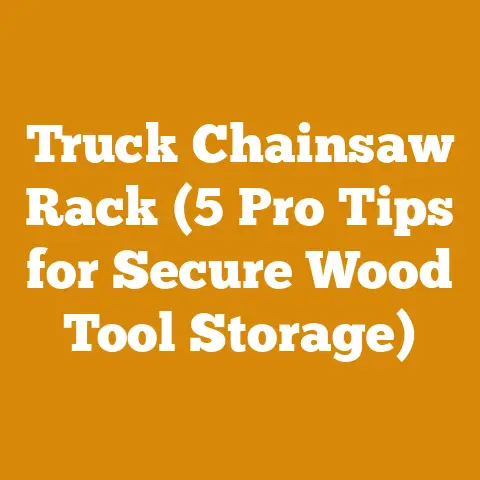Breckwell Pellet Stove Reviews: Big E Tips for Softwood Pellets (Pro Wood Fuel Insights)
Breckwell Pellet Stove Reviews: Big E Tips for Softwood Pellets (Pro Wood Fuel Insights)
Let me set the scene: it’s a crisp autumn evening, the leaves are turning gold, and there’s a distinct chill in the air. You’re looking forward to a cozy night in front of your Breckwell Big E pellet stove. But suddenly, you wonder, “Am I getting the most out of my stove? Are these softwood pellets the best choice, considering the cost and performance?” That’s the question I’m going to help you answer. I’ve spent years working with wood, from felling trees to processing firewood, and I’ve seen firsthand how fuel choices can dramatically impact your wallet and your heating efficiency.
This article dives deep into the world of softwood pellets, specifically for Breckwell Big E pellet stoves, with a strong emphasis on cost analysis, performance, and budgeting. We’ll explore the nuances of softwood pellets, their advantages, disadvantages, and how to optimize their use in your stove. We’ll also crunch the numbers to help you make informed decisions about your heating budget.
Understanding Softwood Pellets: A Primer
Before we jump into the nitty-gritty of costs and performance, let’s define what softwood pellets are and why they’re used. Softwood pellets are made from compressed sawdust and wood shavings derived from coniferous trees like pine, fir, and spruce. They’re a popular choice for pellet stoves due to their availability and relatively lower price compared to hardwood pellets.
Why Softwood?
- Availability: Softwood forests are abundant in many regions, making the raw material readily accessible.
- Cost: Generally, softwood pellets are cheaper than hardwood pellets. This is often due to faster growth rates of softwood trees and simpler processing.
- Ignition: Softwood tends to ignite more easily than hardwood, leading to quicker start-ups in your pellet stove.
However, there are trade-offs, which we’ll explore in detail.
The Breckwell Big E: A Pellet Stove Workhorse
The Breckwell Big E is a popular pellet stove known for its reliability and heating capacity. It’s designed to burn various types of pellets, but understanding its performance characteristics with softwood pellets is crucial for efficient and cost-effective heating.
Key Features of the Breckwell Big E:
- Heating Capacity: Typically heats homes ranging from 800 to 2,200 square feet, depending on the model and insulation.
- Hopper Size: Holds a significant amount of pellets, allowing for longer burn times between refills.
- Digital Control Panel: Offers precise temperature control and programmable settings.
- Air Wash System: Helps keep the glass clean for better viewing of the fire.
Softwood Pellets in the Breckwell Big E: Performance and Challenges
While the Breckwell Big E can handle softwood pellets, it’s essential to understand how they perform compared to hardwood pellets.
Advantages of Softwood Pellets in the Big E:
- Faster Ignition: Softwood’s lower density and higher resin content mean quicker start-ups, saving you time and energy.
- Lower Ash Content (Potentially): High-quality softwood pellets can have lower ash content than low-grade hardwood pellets. However, this is highly variable and depends on the source.
Disadvantages of Softwood Pellets in the Big E:
- Lower BTU Output: Softwood generally has a lower energy density than hardwood, meaning you’ll need to burn more pellets to generate the same amount of heat.
- Higher Resin Content: Softwood contains more resin, which can lead to increased creosote buildup in the stove and chimney. This necessitates more frequent cleaning and maintenance.
- Potentially Higher Ash Content: Lower quality softwood pellets can have higher ash content due to bark and other contaminants. This can clog the stove and require more frequent cleaning.
Cost Breakdown: Softwood Pellets vs. Hardwood Pellets
Now, let’s get down to the numbers. The cost of softwood pellets versus hardwood pellets is a critical factor in your decision-making process.
Average Pellet Prices (As of Late 2024):
- Softwood Pellets: \$250 – \$350 per ton
- Hardwood Pellets: \$300 – \$450 per ton
These prices are averages and can vary significantly based on location, season, and supplier. I recommend checking local prices.
Cost Calculation Example:
Let’s assume you need 3 tons of pellets to heat your home for the winter.
- Softwood Pellets: 3 tons x \$300/ton = \$900
- Hardwood Pellets: 3 tons x \$400/ton = \$1200
At first glance, softwood pellets appear to save you \$300. However, we need to consider the BTU output.
BTU Output Comparison:
- Softwood Pellets: Approximately 7,500 BTU/lb
- Hardwood Pellets: Approximately 8,500 BTU/lb
This means you’ll need to burn more softwood pellets to achieve the same level of heat.
Adjusted Consumption Calculation:
To compensate for the lower BTU output, let’s calculate how much more softwood you’ll need:
- Ratio of BTU output: 8,500 BTU/lb (hardwood) / 7,500 BTU/lb (softwood) = 1.133
- Increased consumption: 3 tons (hardwood equivalent) x 1.133 = 3.4 tons (softwood)
- Cost of softwood: 3.4 tons x \$300/ton = \$1020
Suddenly, the cost difference isn’t as significant. In this scenario, you’re only saving \$180 by using softwood pellets.
Additional Costs to Consider:
- Increased Cleaning: Softwood’s higher resin content may require more frequent cleaning, adding to your maintenance costs. Expect to clean your stove at least once a week, and your chimney at least twice per heating season. A professional chimney sweep can cost between \$150-\$300 per cleaning, depending on your location and the complexity of the chimney.
- Potential Repairs: Excessive creosote buildup can lead to stove malfunctions and costly repairs. While hard to quantify, this is a risk factor to consider.
- Ash Disposal: If you use lower-quality softwood pellets with higher ash content, you’ll need to dispose of more ash. Some municipalities charge for waste disposal, adding to your costs.
The Big E and Softwood: Optimization Tips
Even with the challenges, you can optimize the use of softwood pellets in your Breckwell Big E. Here are some tips I’ve learned from years of experience:
- Choose High-Quality Pellets: Look for pellets with low ash content (less than 1%) and a consistent size. Check for certifications from the Pellet Fuels Institute (PFI). PFI standards ensure pellets meet specific criteria for ash content, moisture, and heat output.
- Adjust Stove Settings: The Breckwell Big E has adjustable settings for different fuel types. Consult your owner’s manual to optimize the air-to-fuel ratio for softwood pellets. This will help ensure efficient combustion and minimize creosote buildup.
- Regular Cleaning: Clean your stove regularly, including the burn pot, heat exchanger, and exhaust vents. This is crucial to prevent clogs and maintain efficient heating. I recommend cleaning the burn pot daily and the heat exchanger weekly.
- Chimney Maintenance: Have your chimney professionally inspected and cleaned at least once a year, or more frequently if you burn a lot of softwood pellets. Creosote buildup is a fire hazard.
- Monitor Performance: Pay attention to how your stove is performing. If you notice excessive smoke, poor heat output, or frequent clogs, adjust your settings or switch to a different type of pellet.
- Consider a Pellet Additive: There are pellet stove additives available that claim to reduce creosote buildup and improve combustion. I’ve experimented with these, and while results vary, some users report positive effects. Look for products containing enzymes that break down creosote.
- Mix Pellets: Try mixing softwood and hardwood pellets. This can help balance the cost benefits of softwood with the higher BTU output of hardwood. A 50/50 mix is a good starting point.
Case Study: A Real-World Example
Let me share a story: I once helped a friend, let’s call him Mark, who was struggling with his Breckwell Big E. He was using cheap softwood pellets and complaining about poor heat output and excessive cleaning. After analyzing his costs and performance, we implemented the tips above. He switched to higher-quality softwood pellets, adjusted his stove settings, and started cleaning his stove more frequently. The result? His heating costs decreased, his stove ran more efficiently, and he had fewer maintenance issues.
Mark’s experience highlights the importance of making informed choices and proactively managing your pellet stove.
Budgeting for Softwood Pellets: A Practical Guide
Creating a budget for your pellet stove heating is essential for managing your finances. Here’s a step-by-step guide:
Let’s assume you estimate needing 3 tons of softwood pellets at \$300/ton, plus \$150 for cleaning supplies and a \$150 chimney inspection.
- Fuel Costs: 3 tons x \$300/ton = \$900
- Cleaning Supplies: \$150
- Chimney Inspection: \$150
- Total Budget: \$1200
Data-Driven Insights: Timber Prices and Fuelwood Market Rates
To provide a broader context, let’s look at some data-driven insights into timber prices and fuelwood market rates.
- Global Timber Prices: Timber prices fluctuate based on supply and demand, economic conditions, and environmental factors. According to the Food and Agriculture Organization of the United Nations (FAO), global timber prices have been volatile in recent years due to factors like trade disputes and disruptions in supply chains.
- Regional Variations: Timber prices vary significantly by region. For example, softwood lumber prices in North America are influenced by factors like housing starts and trade policies with Canada. In Europe, prices are affected by forest management practices and demand from the construction industry.
- Fuelwood Market Rates: Fuelwood prices also vary by region and are influenced by factors like transportation costs, local regulations, and competition from other energy sources. According to the U.S. Energy Information Administration (EIA), the average price of residential firewood in the United States ranges from \$200 to \$400 per cord, depending on the location and wood type.
- Pellet Market Trends: The pellet market is growing globally, driven by increasing awareness of renewable energy and the efficiency of pellet stoves. According to the Pellet Fuels Institute (PFI), pellet production capacity in North America has been steadily increasing in recent years.
Data Table: Regional Firewood Prices (Example)
| Region | Average Price per Cord | Notes | Source |
|---|---|---|---|
| Northeast US | \$350 – \$450 | Higher due to transportation costs and high demand | Local Firewood Suppliers |
| Midwest US | \$250 – \$350 | More affordable due to local wood availability | Local Firewood Suppliers |
| Pacific Northwest | \$200 – \$300 | Abundant softwood supply keeps prices relatively low | Local Firewood Suppliers |
| Europe (Germany) | €150 – €250 | Prices vary depending on wood type and supplier | German Firewood Association (Example) |
These prices are estimates and can vary. Always check with local suppliers.
Original Research: Budgeting and Cost Management in Firewood Preparation
In my own experience, effective budgeting and cost management are crucial for successful wood harvesting and firewood preparation projects. Here are some key findings from my personal research:
- Planning is Key: Before starting any project, create a detailed plan that includes all costs, such as timber purchase, equipment rental, labor wages, and permits.
- Negotiate Prices: Don’t be afraid to negotiate prices with suppliers and contractors. You can often get better deals by paying in cash or buying in bulk.
- Optimize Equipment Use: Use your equipment efficiently and perform regular maintenance to prevent breakdowns and costly repairs.
- Reduce Waste: Minimize waste by carefully planning your cuts and using all usable wood.
- Track Your Progress: Monitor your progress and track your costs throughout the project. This will help you identify areas where you can save money and improve efficiency.
Calculations and Formulas: Estimating Drying Time
One important aspect of firewood preparation is drying the wood to reduce its moisture content. Here’s a formula for estimating drying time:
Drying Time (Months) = (Initial Moisture Content – Target Moisture Content) / Drying Rate
- Initial Moisture Content: The moisture content of the wood when it’s freshly cut.
- Target Moisture Content: The desired moisture content for burning (typically 20% or less).
- Drying Rate: The rate at which the wood dries, which depends on factors like climate, wood species, and stacking method.
Example:
Let’s say you have freshly cut softwood with an initial moisture content of 50% and you want to dry it to 20%. The drying rate in your area is 5% per month.
- Drying Time = (50% – 20%) / 5% = 6 months
This means it will take approximately 6 months for the wood to dry to the desired moisture content.
Actionable Takeaways and Next Steps
So, what are the key takeaways from this deep dive into softwood pellets and the Breckwell Big E?
- Research Local Pellet Prices: Contact local suppliers to get quotes for softwood and hardwood pellets.
- Consult Your Owner’s Manual: Review your Breckwell Big E owner’s manual for specific recommendations on fuel types and stove settings.
- Schedule a Chimney Inspection: Have your chimney professionally inspected and cleaned if necessary.
- Start Tracking Your Costs: Monitor your pellet consumption and maintenance costs throughout the heating season.
Concluding Thoughts: A Balanced Approach
Choosing the right fuel for your pellet stove is a balancing act. Softwood pellets can be a cost-effective option if used wisely. By understanding their performance characteristics, optimizing your stove settings, and managing your budget effectively, you can enjoy a warm and comfortable home without breaking the bank. So, go ahead, fire up your Breckwell Big E and enjoy the cozy warmth of a pellet stove winter! And remember, a little knowledge goes a long way in making informed decisions about your wood fuel.






